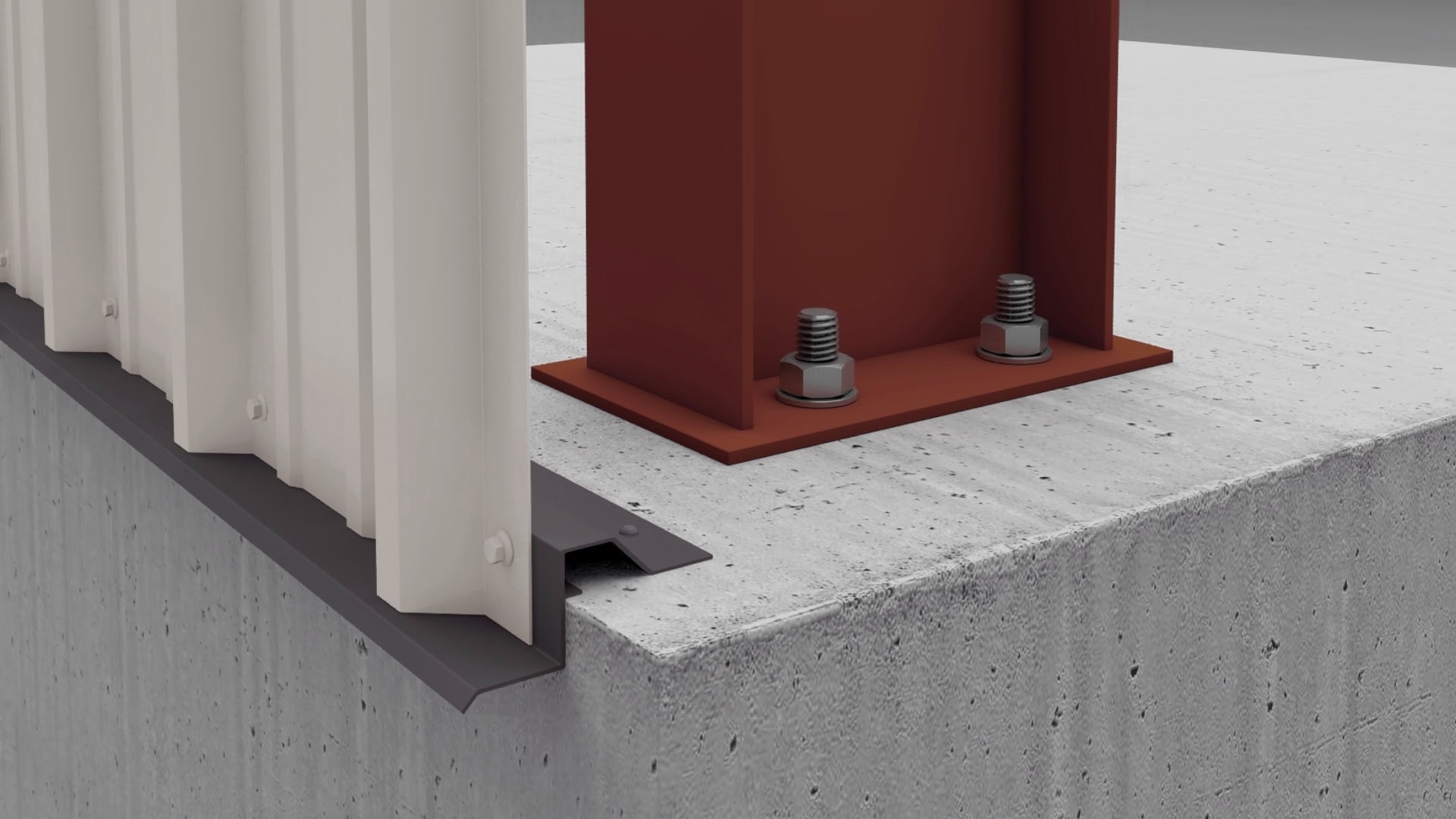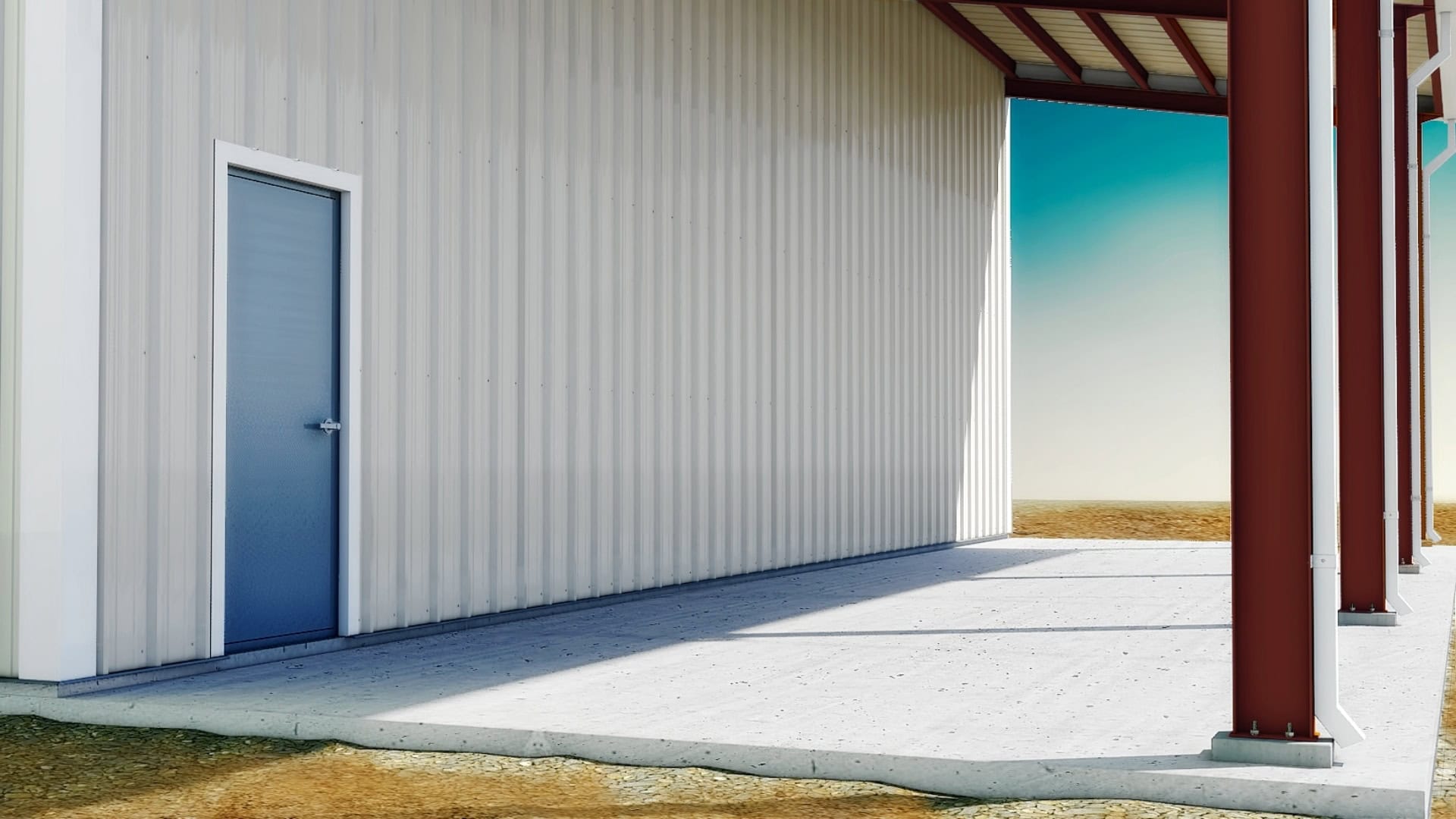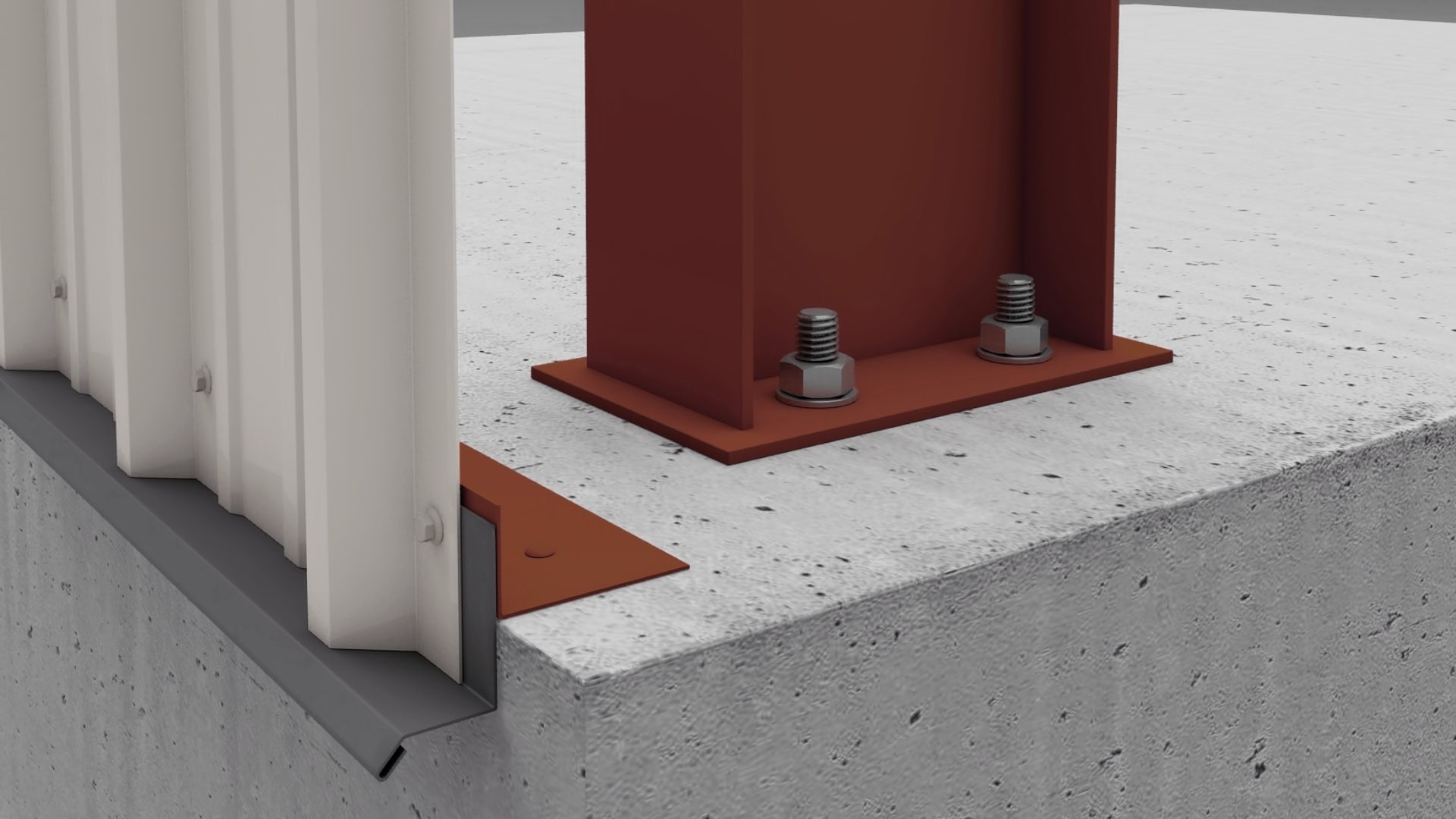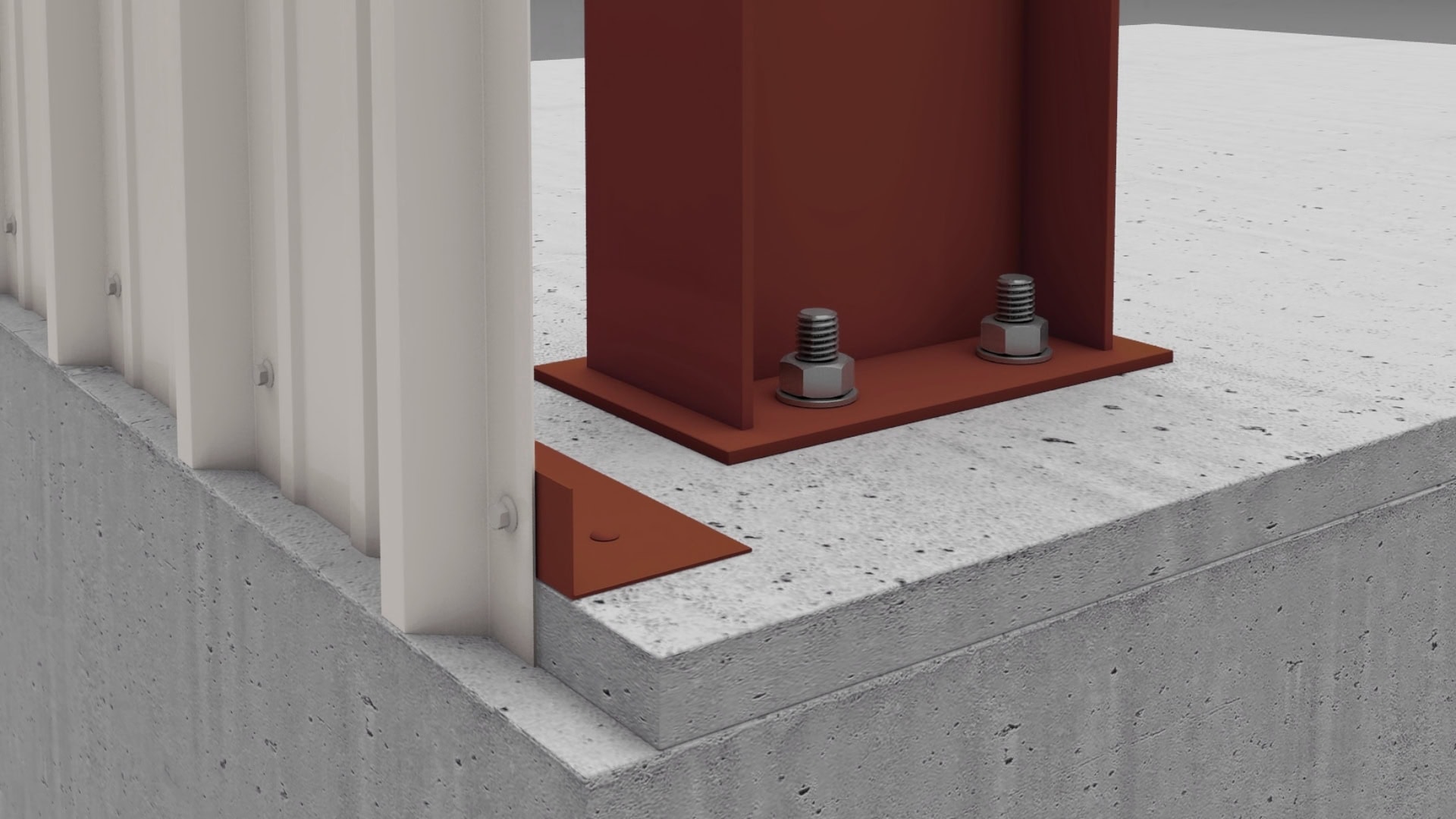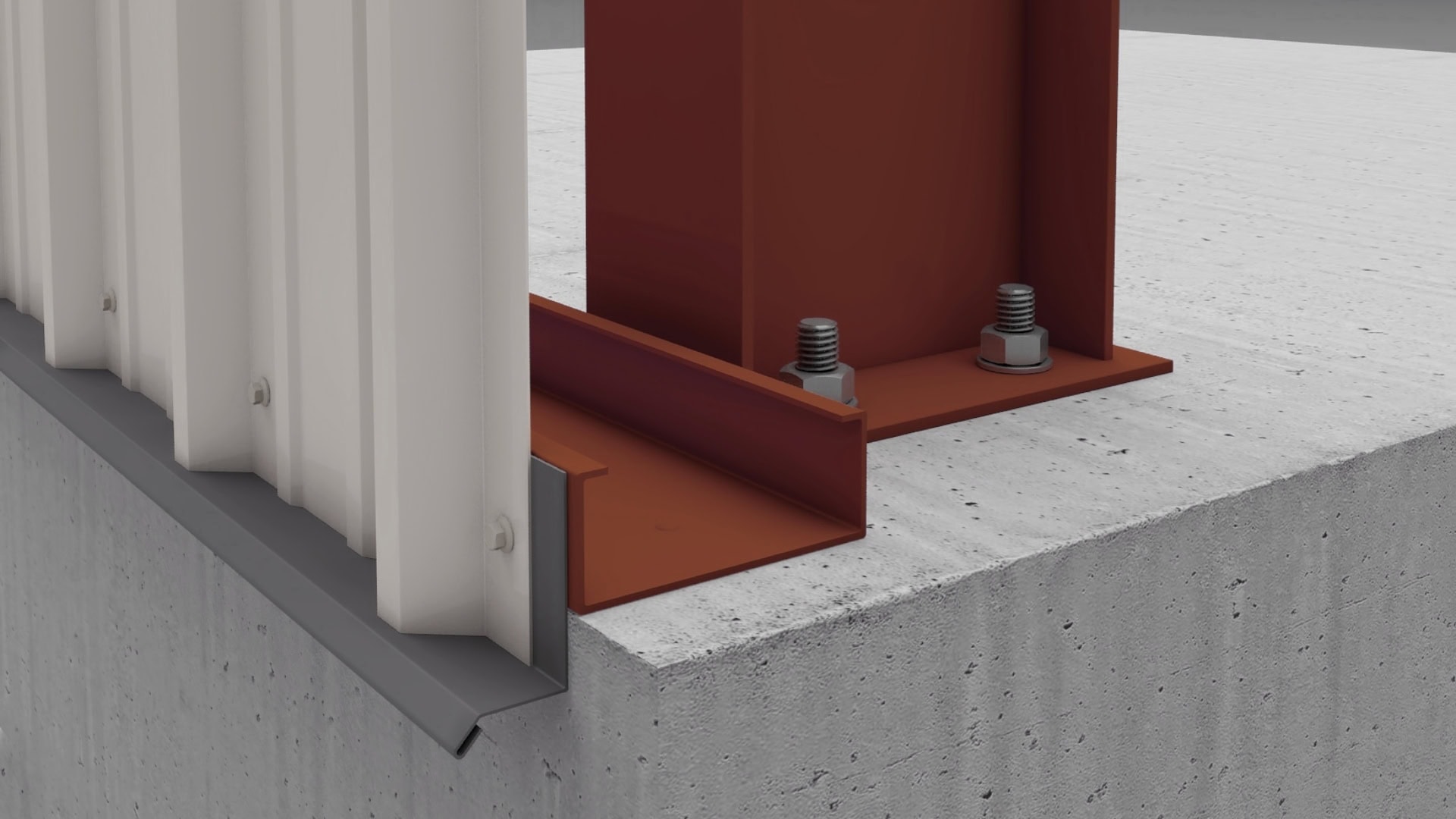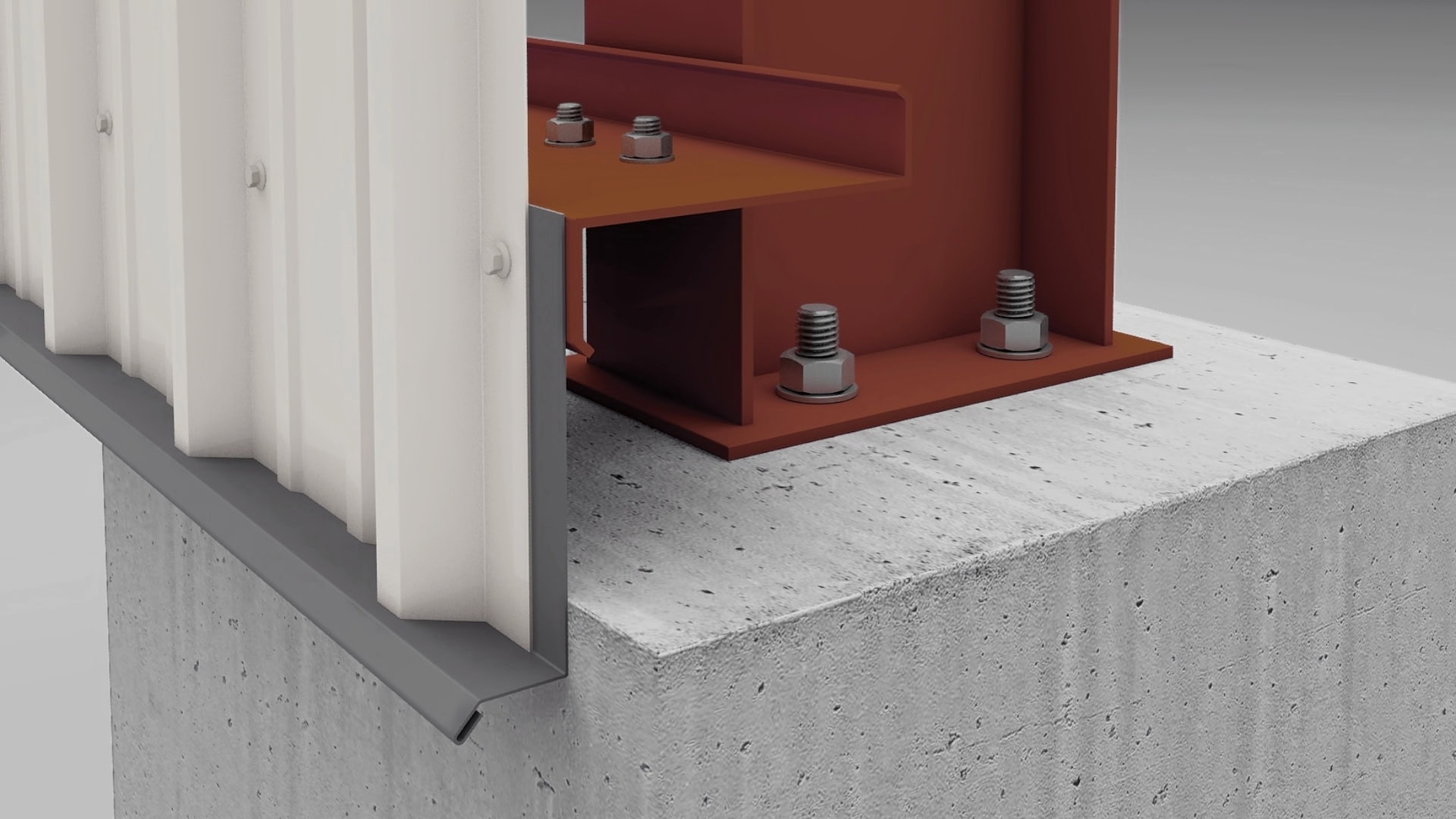Metal Building Base Conditions
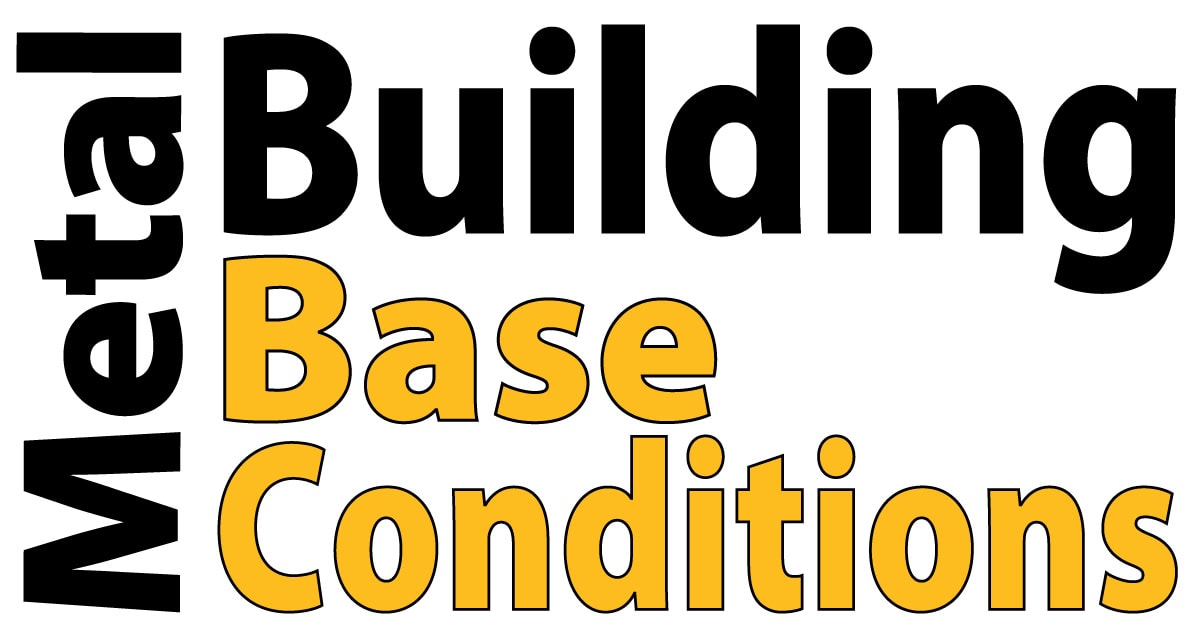
Please note that Buck Steel does not sell metal building components separately. The trim options listed below are only available to our metal building customers.
Images are displayed for presentation purposes only.
Formed Base Trim
Formed base trim is a one-piece extruded aluminum trim that provides a superior method of attachment for the bottom of the buildings wall panels. Sometimes referred to as deluxe-formed base trim, this trim system provides both a ledge for the panel to sit atop as well as an attachment point to the slab. It not only requires less labor to install, but with the use of closure strips, nearly eliminates the possibility of insects and rodents entering the building. Formed base trim also saves money on foundation costs (compared to the base conditions that require a concrete notch). Formed base trim is only available in Burnished Slate color.
Formed Base Trim
(Leanto & Inset Bay)
Because of the way the formed base trim lips over the edge of the concrete slab for the main building – the leanto or inset-bay slab must be poured 1 1/2″ BELOW the base elevation of the main slab. Since the leanto or inset-bay columns will remain at the same height as the main building slab (referred to as base elevation of 100’0″) the 1 1/2″ difference must be made up for by the use of a concrete pedestal – which will allow the base plates of the leanto or inset-bay columns to remain at base elevation of 100’0″. This concept is often misunderstood by concrete contractors and can result in erecting problems if not addressed properly.
Base Angle
with Flashing
This method uses a painted trim piece for the wall paneling to sit atop – attached to a 2” x 4” base angle fastened directly to the buildings slab with masonry fasteners. This design prevents the bottom of the wall panel from coming in direct contact with the concrete, reducing the risk of wall panel corrosion.
Base Angle
with Concrete Notch
This method requires the metal building slab to be poured 3” wider and 3” longer than the actual length of the steel building to allow for a 1-1/2” x 1-1 ½” notch that the wall sheets sit in. Attachment of the panel is accomplished by use of a 2” x 4” base angle fastened directly to the buildings slab with masonry fasteners.
Base Channel
with Flashing
This method uses a painted trim piece for the wall paneling to sit atop – attached to base channel fastened directly to the slab with masonry fasteners. This design prevents the bottom of the wall panel from coming in direct contact with the concrete, reducing the risk of wall panel corrosion.
Lowered Base Girt
with Flashing
This method uses a painted trim piece for the wall paneling to sit atop – attached to a low base girt. This method can be used in situations where a full slab is not being poured and only piers are being used to support the building or when wall panels will not extend all the way down to the ground.

